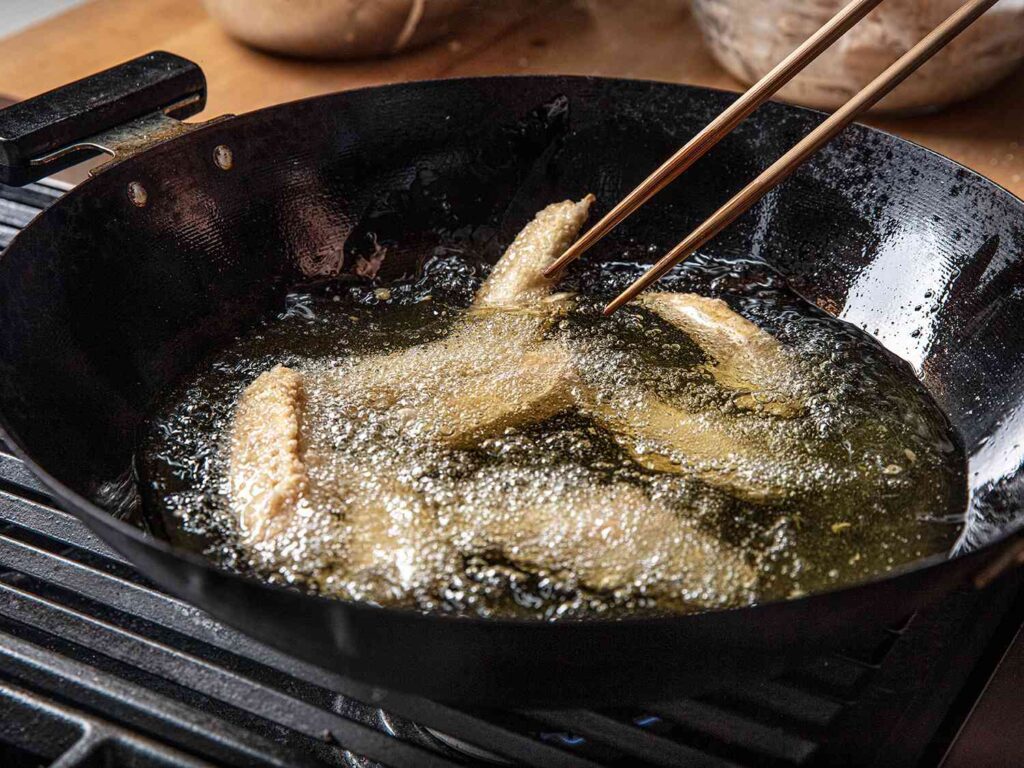Frying is a cooking technique that involves cooking food in hot oil. There are two main types of frying – pan-frying and deep-frying. Choosing the right oil is important to achieve the perfect fried food, as it is essential to use a neutral oil with a high smoke point. Canola oil, vegetable oil, and peanut oil are common oils used for frying. Tips for successful frying include using a thermometer to monitor the temperature of the oil, not overcrowding the pan, not over-soaking the food in batter, and draining the food on paper towels after frying to remove excess oil.
Frying Fundamentals: Everything You Need to Know About Pan-Frying, Deep-Frying, and More
Frying is a cooking method that has been used for centuries. From crispy fried chicken to golden-brown French fries, frying can turn any food into a delicious treat. But, with so many different types of frying techniques and oils to choose from, where do you even begin as a beginner? Fear not, as we will delve into everything you need to know about frying, including tips and tricks, to help you master this cooking method.
What is frying?
Frying is a quick cooking technique that involves cooking food in hot oil. The food is typically coated in batter or breadcrumbs, which helps to create a crispy crust. There are two main types of frying: pan-frying and deep-frying.
Pan-frying
Pan-frying involves cooking food in a shallow pan with a small amount of oil. This method is typically used for cooking delicate foods, such as fish or chicken breasts.
To pan fry, heat a small amount of oil in a pan over medium-high heat until it shimmers. Then, carefully add the food to the pan, making sure not to overcrowd it. Cook the food for a few minutes on each side until it is golden brown and cooked through.
Deep-frying
Deep-frying involves submerging food completely in hot oil. This method is typically used for cooking foods that are already coated in batter or breadcrumbs, such as French fries or fried chicken.
To deep fry, fill a large pot or deep frying pan with oil and heat it to around 375°F. Carefully add the food to the hot oil, making sure not to overcrowd the pan. Cook the food for a few minutes until it is golden brown and cooked through.
Choosing the right oil for frying
Choosing the right oil for frying is essential to achieving the perfect fried food. It’s essential to use a neutral oil with a high smoke point, which means that it can be heated to high temperatures without smoking. Common oils used for frying include canola oil, vegetable oil, and peanut oil.
Canola oil
Canola oil is a neutral oil with a high smoke point, making it ideal for frying. It has a mild flavor and is lower in saturated fat than some other oils.
Vegetable oil
Vegetable oil is another neutral oil with a high smoke point. It’s a blend of different oils, such as soybean, corn, and sunflower oil, making it an affordable option.
Peanut oil
Peanut oil is a popular choice for frying because it has a high smoke point and a nutty flavor that works well with many fried foods. However, it’s important to note that peanut oil may not be suitable for those with peanut allergies.
Tips and tricks for successful frying
Frying can be tricky, but with a few tips and tricks, you can achieve perfect fried food every time.
Use a thermometer
Using a thermometer to monitor the temperature of the oil is essential to successful frying. If the oil is too hot, the food will cook too quickly on the outside and be raw on the inside. If the oil is not hot enough, the food will absorb too much oil and become greasy.
Don’t overcrowd the pan
Overcrowding the pan can cause the temperature of the oil to drop, resulting in food that is greasy and undercooked. It’s important to give each piece of food enough space to cook evenly and maintain the temperature of the oil.
Don’t soak the food in batter
Soaking food in batter for too long can cause it to become soggy and absorb too much oil. It’s best to dip the food in the batter just before frying to ensure a crispy crust.
Drain the food on paper towels
After frying, it’s important to drain the food on a paper towel-lined plate to remove any excess oil. This will help to keep the food crispy and prevent it from becoming greasy.
In conclusion, frying is a delicious and versatile cooking method that can turn any food into a tasty treat. By following these tips and tricks, you can master the art of frying and impress your friends and family with perfectly crispy fried foods. Remember to choose the right oil, use a thermometer, and don’t overcrowd the pan, and you’ll be frying like a pro in no time.
